Some Hydraulics of
Roman Aqueducts. Myths, Fables, Realities. A Hydraulician's perspective
by Hubert CHANSON (h.chanson@mailbox.uq.edu.au)
M.E., ENSHM Grenoble, INSTN, PhD (Cant.), DEng (Qld),
Eur.Ing., MIEAust., MIAHR
Div. of Civil Engrg., Univ. of Queensland, Brisbane
QLD 4072, Australia
 -
-  -
-  -
- 
 -
-  -
-  -
-  -
- 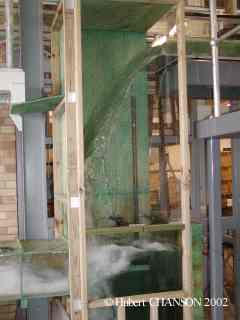
Presentation
Roman aqueducts supplied waters to cities for
public baths (
thermes) and toilets (
latrines) (HODGE
1992, FABRE et al. 2000), in addition of public fountains. They were
long
subterranean conduits,
following contours lines, with flat longitudinal slopes : i.e., 1 to 3
m per km, even less at Nîmes (0.24 m/km). Numerous aqueducts were
used for centuries
and some are still in use (e.g. Carthage, Mons). Their construction was
a huge task, often performed by the army under the guidance of military
hydraulic engineers. Their cost was extra-ordinary considering the real
flow rate (i.e. less than 400 L/s) : about 1 to 3 millions sesterces
per
kilometre in average (FEVRIER 1979, LEVEAU 1991)
(1).
Despite
superb
ruins, little is known of the hydraulics of the Roman aqueducts.
What was the flow rate ? How did they operate ? How were they designed
? Who were the hydraulic engineers ? How did they learn their expertise
?
Hydrology and operation
of
some Roman aqueducts
The hydrology of some catchment areas supplying
Roman aqueducts were recently studied. For example, the "source de
l'Eure" at Uzés supplying the Nîmes aqueduct, the "
source
de Gorze" feeding the Gorze aqueduct (Metz), the "
source du Thou"
and "
ruisseau d'Arches" supplying the Mont d'Or aqueduct (Lyon)
and the "
sources de la Siagnole" feeding the Mons aqueduct
(Fréjus), which are all in use today
(2).
Overall, recent hydrological data show large
variations in streamflows. During dry periods, the daily flow was
typically less than 10% of the maximum discharge. While the flow rates
during Roman times are unknown, it is plausible that hydrological
variations were similar to
present trends. This suggests that the aqueducts conveyed relatively
low
flows during dry periods.
Regulation Basins
Several aqueducts were equipped with regulation
basins installed along the canal. For example, at Ars-sur-Moselle
(Metz); at
the Vallée de l'Eure, upstream of
Pont-du-Gard,
at Lafoux along the Nîmes
aqueduct; at Segovia upstream of the aqueduct bridge. Most regulation
basins were equipped with a series of gates and an overflow system.
Basic
hydraulic considerastions imply that
undershoot gates were used
to regulate the aqueduct flow while
overshoot gates were used
for
the overflow discharge (CHANSON 2000b).
Hydraulic calculations were conducted for two
large regulation basins on the Gorze and Nîmes aqueducts. The
results demonstrated that the undershoot gate openings had to be small
: i.e., between 2 and 10 cm at Gorze, and between 3 and 12 cm at
Nîmes (CHANSON 2000b,c).
This type of operation implied fine gate opening adjustment systems to
enable precise flow regulation.
Discussion : what type of flow regulation ?
Water supply operation can be based upon two
different techniques : on/off (i.e. 100% or 0%), or a dynamic flow
regulation. In the former case, the gates were open constantly, and the
waters flowed to the cities, without further regulation than the force
balance between gravity and flow resistance (e.g. CHANSON 1999a). The
gates and valves were used to stop the flow for repairs, maintenance
and cleaning. Dynamic flow
regulation is commonly used in modern times and it involves a
series
of operation to respond constantly to the users' demand. In Roman
times,
this type of operation would have required an engineer in charge of the
regulation, gangs of workmen operating the gates and a good
communication
system along the aqueduct canal.
Dropshaft cascades
Although most aqueducts had a mild slope, some
steep sections were documented along few aqueducts (CHANSON 2000a,
2002a,c).
Three designs of steep sections were commonly used: i.e, smooth steep
chute, stepped chute and cascade of dropshafts. The latter is most
unusual,
even in modern times.
A dropshaft
(3)
is a vertical shaft connecting two canals at different vertical
elevations. Such a structure is commonly used in sewer systems today
(e.g. MERLEIN et al. 2002). A dropshaft is an energy dissipator.
Roman dropshafts were characterised
by
a deep pool and a relatively wide shaft, compared to modern designs. A
recent study showed that the Roman dropshaft design was most efficient
(CHANSON 2002a,2004).
The Roman engineers devised also
cascades de
dropshafts : i.e, a succession of dropshafts installed in-line.
Well-documented dropshaft cascades include Recret (Yzeron, Lyon) and
Madinat-al-Zhara (Valdepuentes, Cordoba). Other dropshaft cascades
existed at Montjeu (Autun) and Cuicul (Alg). The construction of a
dropshaft cascade was a
very difficult task, with numerous
subterranean conduits, connected by vertical shafts, in a steep
topography (e.g. Valdepuentes). Even in modern times, the task would be
a
major engineering challenge ! The successful operation of
dropshaft cascades for centuries
(4)
demonstrates a sound design, and a solid hydraulic experience, if not
expertise.
Recently, some hydraulic studies of Roman
dropshaft models were conducted in
1/3
scale models and at
full-scale
(e.g. CHANSON 1999b, 2002a,d, 2004,2004b,2007). The results highlight a
satisfactory
dropshaft operation for
a wide range of flow conditions and dropshaft geometries, but for a
narrow range of discharges. The latter range may be predicted
analytically (CHANSON 1998, pp. A1-A7).
Discussion
Two shapes of dropshafts were typically used :
rectangular and circular. For example, circular at Valdepuentes and
Cherchell; rectangular at Recret, Vaugneray. At Valdepuentes, one
dropshaft cascade, Fuentes de la Teja-Madinat al Zahra, included three
shafts
with an outlet canal at
90-degree with the
inlet canal direction (VILLANUEVA 1993 1996). Such a geometry was
rare,
although there were possibly 5 shafts with such a disposition at
Montjeu
(Autun). It was a very efficient hydraulic design in terms of energy
dissipation
(CHANSON 2002a,d).
The literature on Roman dropshafts contains a
number of discrepancies and errors. For example, most writings on the
Brisecou (Montjeu) dropshaft cascade derived from a drawing of
ROIDOT-DELEAGE (1879?), which is physically impossible
(5). In contrast, the Valdepuentes
aqueduct at Cordoba is well-documented (LOPEZ-CUERVO 1985, VILLANUEVA
1993,1996).
Culverts
A culvert is a short conduit to allow stream
flows beneath an embankment. The Romans built a number of culverts
beneath major roads (BALLANCE 1951). Some culverts were also built
beneath aqueducts. An impressive culvert was the
multi-cell box culvert underneath the
Nîmes aqueduct at vallon No. 6, downstream of Pont du Gard
(CHANSON 2002b,c). Unique features of the culvert were
a multi-cell design, a large size and a modern hydraulic design.
The
culvert
could pass up to 4.2 m
3/s, almost 12 times the maximum
discharge capacity of the Nîmes aqueduct. In the barrel, the flow
velocities were about 2.5 m/s for a 3 m
3/s flow rate. This
structure shows that Roman engineers understood hydrology and runoff,
and that they had a solid hydraulic design experience.
Summary
In conclusion, the writer is very impressed by
the hydraulic knowledge, experience and expertise of the Roman
engineers who designed the regulation basins, dropshaft cascades and
culverts. They knew much more that most modern hydraulic engineers !
Yet we know so little of their background.
Footnotes
(1) Today this would represent about 20 to 60
millions US$ per km. For comparison, the construction of the Tarong
water pipeline (Australia, 70 km long, Q = 0.9 m3/s) costed
about 100,000 US$ per km in 1994 !
(2) At Uzés, the catchment area was about
45 km2. Flow rate measurements, conducted between 1967 and 1978, gave
an
average daily discharge of about 29,600 m3/day, with maximum
daily flow of 143,400 m3/day and minimum daily output of 10,800 m3/day
(FABRE et al. 1991). At Gorze, the catchment area was 58 km2.
Measurements
between 1997 and 1998 showed an average daily source flow rate of 8,050
m3/day, with maximum flow rate of about 11,000 m3/day and minimum daily
flow rate of less than 1,100 m3/day. At Mons, measurements of the
sources
de la Siagnole were conducted between 1981 and 1993 (VALENTI 1995a,b).
The
average daily flow was 97,200 m3/day, with a maximum daily output of
1,550,000
m3/day and a minimum daily flow of zero (dry). For the Mont-d'Or
aqueduct,
modern data suggest an average daily flow of 1,400 m3/day, with daily
minimum
and maximum of 250 and 4,500 m3/day respectively. (BURDY 2002).
(3) Dropshaft = puit de rupture (in French) =
Tosbecken or Fallschaft (in German) = pozo resalto (in Spanish).
(4) for example, the dropshaft cascades of the
Valdepuentes aqueduct (Cordoba) were re-used by the Muslims (VILLANUEVA
1993).
(5) Hubert CHANSON inspected the Brisecou
cascade in
September 2000, and he studied the original manuscript of Jean
ROIDOT-DELEAGE (1794-1878).
Detailed photographs
1- Gier aqueduct (Lyon, France) - Le
Mornantay (Mornant) in June 1998 ; Chaponost in June 1998 : looking at
the arcades from the head tank of the Beaunant siphon (i.e. looking
toward
the upstream)
2- Les Peirou dam (France 1891) in
June 1998 - The present dam was built on the foundation of the Roman
arch dam at Glanum [Ref.: CHANSON and JAMES 1998, Research Rep. CE157].
More
about Arch dams ...
3 - Brévenne aqueduct (Lyon France) - Biternay in Sept. 2000, inside view
looking upstream
4- Nîmes aqueduct, France.
Pont du Gard,
Nîmes aqueduct, France in June 1998 - View from the right bank
Pont de
Bordnègre in Sept. 2000 : inlet view, showing the bridge
pier shaped to cut the waters. Culvert
beneath the aqueduct between Combe de Sartanette and Combe Saint
Joseph, downstream of Pont du Gard.
Main culvert cell (0.8-m wide).
5- Fréjus aqueduct (France). Photo No. 1 : arches de Sainte Croix;
Photo No. 2 : looking upstream; Photo No. 3 : looking dowsntream (14
Sept. 2000).
Roman dropshaft ('puit de rupture')
6- Roman dropshaft in operation : Recret model (Aug. 1998) [Ref.: CHANSON 2000, Am Jl Archaeology, CHANSON 2002, Jl of Hyd. Res.] Regime R1 : the usual operation mode
in Roman aqueduct (photo dc/h = 0.06) ; Regime R2 : high risks of erosion and
damage at the intake of downstream conduit (photo dc/h =
0.12) ; Regime R3 : at large flow
rates, usual
operation in modern sewer dropshaft (photo dc/h = 0.22)
7- Roman dropshaft in operation : Valdepuentes
model (90-degree angled outlet) (Aug. 1999) [Ref.: CHANSON 2000, Am Jl Archaeology, CHANSON 2002, Jl of Hyd. Res.]
8- Full scale hydraulic model of Roman dropshaft. Drop in invert
elevation: 1.7 m, pool depth: 1 m, shaft dimensions: 0.75 m by 0.76 m,
flow rates: 5 to 70 L/s (CHANSON 2004, Jl
Irrig. & Drainage Engrg). Regime
R1
: photograph for Q = 7.6 L/s (July 2002) ; Regime R3 : photograph for Q = 67 L/s
(Aug. 2002)
Related links
References and Bibliography
BALLANCE, M.H. (1951). "The Roman Bridges of the
Via Flaminia." Papers of the British School at Rome, Vol. 19,
pp. 78-117 & plates xiv to xix.
BURDY, J. (2002). "Les Aqueducs Romains de
Lyon." Presses Universitaires de Lyon, Lyon, France, 204
pages.
CHANSON, H. (1998). "The Hydraulics of Roman
Aqueducts : Steep Chutes, Cascades and Dropshafts."
Research Report
No. CE156, Dept. of Civil Engineering, University of Queensland,
Australia, 97 pages. (
PDF version at
EprintsUQ)
CHANSON, H. (2000b). "A Hydraulic Study of Roman
Aqueduct and Water Supply."
Aust. Jl of Water Resources,
I.E.Aust., Vol.
4, No. 2, pp. 111-120. Discussion: Vol. 5, No. 2, pp.
217-220. (
Download PDF File)
CHANSON, H. (2002a). "An Experimental Study of
Roman Dropshaft Hydraulics."
Jl of Hyd. Res., IAHR, Vol. 40,
No. 1, pp. 3-12. (
Download PDF File)
CHANSON, H. (2002b). "Hydraulics of a Large
Culvert beneath the Roman Aqueduct of Nîmes."
Jl of
Irrigation and Drainage Engrg., ASCE, Vol. 128, No. 5, Oct., pp.
326-330. (
Download PDF File)
CHANSON, H. (2002c). "Certains Aspects de la Conception hydrauliques
des Aqueducs Romains." ('Some Aspect on the Hydraulic Design of Roman
Aqueducts.') Jl La Houille Blanche, No. 6/7, pp. 43-57 (ISSN 0018-6368)
(in French). (
Download PDF File)
CHANSON, H,. (2002d). "An Experimental Study of Roman Dropshaft
Operation : Hydraulics, Two-Phase Flow, Acoustics." Report CH50/02,
Dept of Civil Eng., Univ. of Queensland, Brisbane, Australia, 99 pages
(ISBN 1864996544). (
Download PDF files [2.5 Mb])
CHANSON, H. (2004). "Hydraulics of Rectangular
Dropshafts."
Jl of Irrigation and
Drainage Engrg., ASCE, Vol. 130, No. 6, pp. 523-529 (ISSN
0733-9437). (
Download PDF file)
CHANSON, H. (2004b). "Understanding Air-Water Mass Transfer at
Rectangular Dropshafts."
Jl of
Environ. Eng. and Science, Vol. 3, No. 5, pp. 319-330 (ISSN
1496-256X). (
Download PDF file)
CHANSON, H. (2007). "Air Entrainment Processes in
Rectangular Dropshafts at Large Flows."
Journal of Hydraulic Research,
IAHR, Vol. 45, No. 1, pp. 42-53 (ISSN 0022-1686). (
PDF file
at UQeSpace)
CHANSON,
H. (2008). "The Hydraulics of Roman Aqueducts: What do we know? Why
should
we learn ?" Proc. World
Environmental and Water Resources Congress 2008 Ahupua'a, ASCE-EWRI
Education, Research and History Symposium, Hawaii, USA, Invited
Plenary, 13-16
May, R.W. BADCOCK Jr and R. WALTON Eds., Paper 166, 16 pages (ISBN:
978-0-7844-0976-3). (PDF file at
UQeSpace)
FABRE, G., FICHES, J.L., and PAILLET, J.L.
(1991). "Interdisciplinary Research on the Aqueduct of Nîmes and
the Pont du Gard."
Jl of Roman Archaeology, Vol. 4, pp. 63-88.
FABRE, G., FICHES, J.L., and PAILLET, J.L.
(2000). "L'Aqueduc de Nîmes et le Pont du Gard.
Archéologie, Géosystème, Histoire." CNRS
Editions, CRA Monographies Hors Série, Paris, France, 483
pages & 16 plates.
FEVRIER, P.A. (1979). "L'Armée Romaine et
la Construction des Aqueducs." Dossiers de l'Archéologie,
Séries Les Aqueducs Romains, Vol. 38, Oct./Nov., pp. 88-93.
HODGE, A.T. (1992). "Roman Aqueducts &
Water Supply." Duckworth, London, UK, 504 pages.
LEVEAU, P. (1991). "Research on Roman Aqueducts
in the past Ten Years." Future Currents in Aqueduct Studies,
Leeds, UK, T. HODGE ed., pp. 149-162.
LOPEZ-CUERVO, S. (1985). "Medina Az-Zahra
Ingeniera y Formas." Publicaciones del Ministerio de Obras Publicas
y Urbanismo, Madrid, Spain169 pages (in Spanish).
ROIDOT-DELEAGE, J. (1879?). "Autun Ancient et
Moderne." Société Eduenne, Autun, France, 2
volumes.
VALENTI, V. (1995a). "Aqueduc Romain de Mons
à Fréjus. 1. Etude Descriptive et Technique. Son
Tracé, son Profil, son Assise, sa Source ..." Research Report,
Fréjus, France, 97 pages.
VALENTI, V. (1995b). "Aqueduc Romain de Mons
à Fréjus. 2. Etude Hydraulique. Son Débit ... de
sa Mise en Service à son Déclin." Research Report,
Fréjus, France, 123 pages.
VILLANUEVA, A.V. (1993). "El Abastecimiento de
Agua a la Cordoba Romana. I : El Acueducto de Valdepuentes." ('The
Water Supply of the Roman Cordoba. I : Aqueduct of Valdepuentes.') Monografias
No. 197, Universidad de Cordoba, Servicio de Publicaciones,
Cordoba, Spain, 172 pages (in Spanish).
VILLANUEVA, A.V. (1996). "El Abastecimiento de
Agua a la Cordoba Romana. II : Acueductos, Ciclo de Distribución
y Urbanismo." ('The Water Supply of the Roman Cordoba. II : Aqueduct,
Distribution System and Urbanism.') Monografias No. 251,
Universidad de Cordoba, Servicio de Publicaciones, Cordoba, Spain, 222
pages (in Spanish).
Acknowledgments
Hubert CHANSON thanks all the people who
provided him
with relevant information, in particular: Prof. C.J. APELT, University
of
Queensland; Mr G. BERGE Jussy (Fra); Dr D. BLACKMAN, Monash University;
Dr
J. BURDY, Lyon, France; Ms P. CHARDON-PICAULT, Autun (Fra); Ms CHOU
Y.H., Brisbane; Dr J.L. FICHES, France; Dr A.T. HODGE, Carleton
University (Can); Mr G. ILLIDGE, University of Queensland; Mr C.
LEFEBVRE, Châtel-St-Germain (Fra); Dr P. LEVEAU,
Université d'Aix-en-Provence; Mr J.C. LITAUDON, Saint-Etienne
(Fra); Mr D. MURPHY, Houston (USA); Prof. N. Rajaratnam, University of
Alberta (Can); Société Mosellane des Eaux, France; Mr A.
STRASBERG, Musée Rolin, Autun (Fra); Mr V. VALENTI,
Fréjus (Fra); Dr A.V. VILLANUEVA, University of Cordoba; Dr A.I.
WILSON, Oxford.
License

This work is licensed under a
Creative Commons
Attribution-NonCommercial 3.0 Unported License.
Hubert CHANSON
is a Professor in Civil Engineering,
Hydraulic Engineering and Environmental Fluid Mechanics at
the University of Queensland,
Australia. His research interests include design of hydraulic
structures, experimental investigations of two-phase flows, applied
hydrodynamics, hydraulic engineering, water quality modelling,
environmental fluid mechanics, estuarine processes and
natural resources. He has been an active consultant for both
governmental agencies and private organisations. His publication record
includes over 620 international refereed papers and his work was cited
over 3,700 times (WoS) to 6,300 times (Google
Scholar) since 1990.
Hubert Chanson is the
author
of several books : "Hydraulic
Design
of
Stepped Cascades, Channels, Weirs and Spillways" (Pergamon, 1995), "Air Bubble Entrainment in Free-Surface
Turbulent Shear Flows" (Academic
Press, 1997), "The Hydraulics of
Open Channel Flow : An Introduction" (Butterworth-Heinemann, 1st
edition 1999, 2nd editon 2004),
"The Hydraulics of Stepped Chutes and
Spillways" (Balkema, 2001), "Environmental Hydraulics of
Open Channel
Flows" (Butterworth-Heinemann,
2004), "Applied
Hydrodynamics: an Introduction of Ideal and Real Fluid Flows" (CRC Press, 2009),
and "Tidal Bores,
Aegir, Eagre, Mascaret, Pororoca: Theory And Observations" (World
Scientific, 2011). He
co-authored two further books "Fluid
Mechanics
for Ecologists" (IPC Press,
2002) and "Fluid Mechanics for Ecologists. Student Edition" (IPC, 2006). His textbook "The
Hydraulics of Open Channel Flows : An
Introduction" has already been translated into Spanish (McGraw-Hill Interamericana)
and Chinese (Hydrology Bureau of Yellow River Conservancy
Committee), and the second
edition was published in 2004. In 2003, the IAHR
presented him with the 13th Arthur Ippen
Award for outstanding
achievements in hydraulic engineering. The American Society of Civil
Engineers, Environmental and Water Resources Institute (ASCE-EWRI)
presented him with the 2004 award for the Best Practice paper in the
Journal of Irrigation and Drainage Engineering ("Energy
Dissipation and Air Entrainment in
Stepped Storm Waterway" by Chanson and Toombes 2002). Hubert
Chanson edited further several books : "Fluvial,
Environmental and
Coastal Developments in Hydraulic
Engineering" (Mossa, Yasuda & Chanson 2004, Balkema), "Hydraulics.
The Next
Wave" (Chanson & Macintosh 2004, Engineers
Australia), "Hydraulic
Structures: a
Challenge to Engineers and Researchers" (Matos & Chanson 2006, The University of Queensland), "Experiences
and Challenges in Sewers:
Measurements and Hydrodynamics" (Larrate & Chanson 2008,
The University of Queensland),
"Hydraulic
Structures: Useful
Water Harvesting Systems or Relics?" (Janssen & Chanson 2010,
The University of Queensland),
"Balance and
Uncertainty: Water in a Changing World" (Valentine et al. 2011, Engineers Australia).
He chaired the Organisation of the 34th
IAHR World Congress held in Brisbane, Australia between 26
June and 1 July 2011. He chairs the Scientific Committee of the 5th
IAHR International Symposium on Hydraulic Structures to be held in
Brisbane in June 2014.
His Internet home page is http://www.uq.edu.au/~e2hchans.
He also developed a gallery of photographs website {http://www.uq.edu.au/~e2hchans/photo.html}
that received more than 2,000 hits per month since inception.
More pictures of Roman waterworks are here ...
TECHNICAL INTERNET RESOURCES
More about a history of arch dams
... More about timber crib
weirs ... More about steel dams
...
More about engineering
failures ... More about rubber
dams ... More about a tidal
bore ...
More about the Formal Water Garden
.... More about rapid
reservoir sedimentation in Australia ...
More about Minimum Energy Loss culverts
.. More about Minimum Energy
Loss
weirs ...
This page was visited : 12,453 times
between
18-08-2002 and June 2012.
Last updated on 23/07/2012
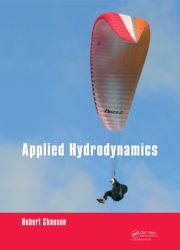
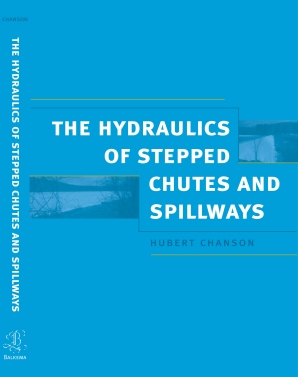
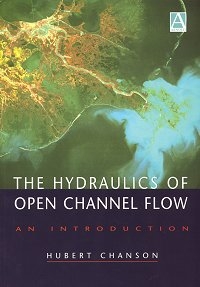


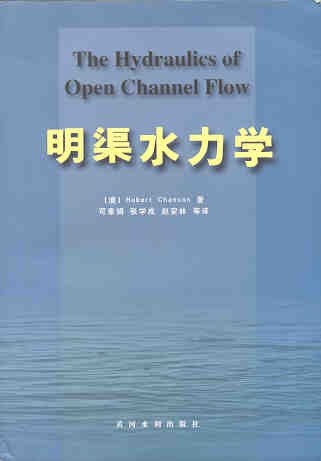
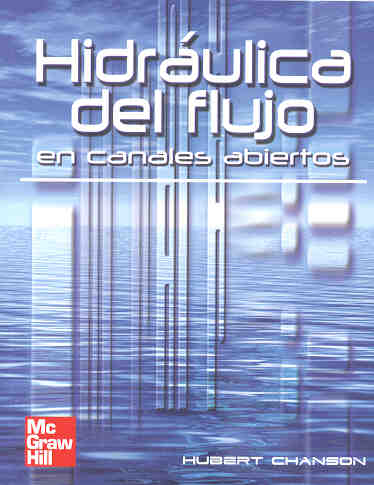
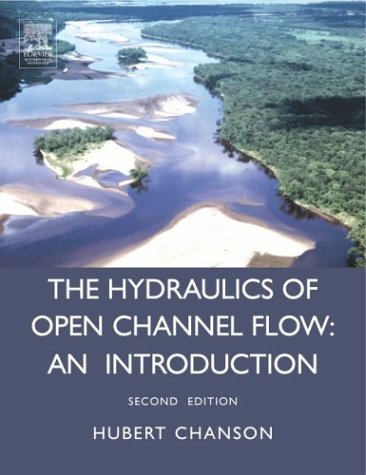
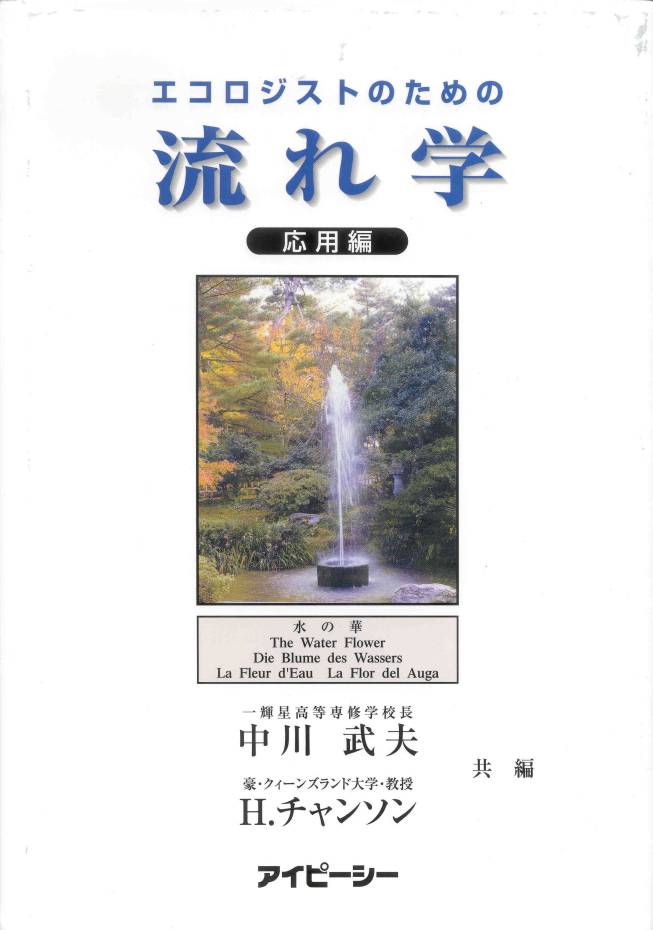
 -
-  -
-  -
- 
 -
-  -
-  -
-  -
- 
 -
-  -
-  -
- 
 -
-  -
-  -
-  -
- 









